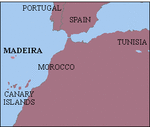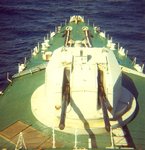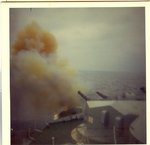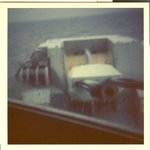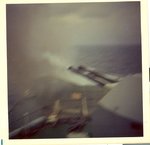Freebird
Master Sergeant
I have an idea guys. Since my "let's gt it started and see what sticks" posts seems to have confused people, lets start from scratch. Since we now know we can mix and match, it sure opens the possibilities.
Tim and Freebird. Since you two have the strongest opinions here, why don't you post something to start with?
Also, just a question.......if we are picking Battleships, would the Yamato be an option? yes I know it only went 27 knots and the carriers would have to wait on it, but the firepower it would bring in a battle group would be tremendous. It was launched in 1940 so it's an option.
I thought we were doing "completed date", now if you pick Mar 1940 things become VERY interesting, as you would miss all the modern Battleships, as Littorio was completed in May, Bismarck in Aug and King G.V. in Dec. Yamato North Carolina were not completed until 1941. Thor, remember that "launched" only means that the hull is complete, it still needed guns, turrets etc. worked on.
Anyways if you pick Mar 1940 there is no BB faster than 23 knots, making the BC's {Renown, Scharnhorst} very valuable indeed.
Ok, it's a thread that has promise so let's give it a whirl.
For starters, let set up the time and geography. Time is 1940, March. No particlular reason I picked March, just came to mind. Anybody have any strong opinions about another month, have at it.
Three powers. One is Maritime, the other two are continental. The Maritime power is one large island with colonies that supply raw materials. It's economic power is roughly 40% greater than one of the the continental powers and about 10% less than the other. For simplicty, we'll make England our Maritime power and Spain and Germany the two Continental powers. Lends itself to the time frame as well. France is neutral, as is the rest of Europe to varying degress. But France is decidedly not friendly to Germany, indifferent to Spain and cordial to England.
US is friendly to England. USSR is cordial but not overly friendly to England. Italy is not friendly to England. Nordic Countries are strictly neutral.
All England's possessions are in play as they were in 1940. Same geography, same trade routes.
All airplanes in the world at that point are available with the exception of the the Japanese Empire. Japan, as a power, does not exist. It has the same power as China so it is not a regional power. Strictly local. Aircraft are second rate from the US/England/France. Just did it it for simplicity. Same with the Japanese Navy. No oriental equipment is used in the setup (and they had some very good stuff). Again, nothing personal, just for simplicity.
Ships, the same. England can purchase or "lend lease" ships from the US. Spain can do the same with Italy. USSR sells to both sides. Same goes with other equiepment.
As for the fleet sizing, I would say 8-8-5 for BBs. Cruisers, Ger- 12, GB- 33, Esp- 9. DDs Ger- 33, GB- 57, Esp-21. Subs, Ger- 48, GB 39, ESP 30. Carriers, Ger 2, GB 5, Esp 1.
Ok, it's a start. Somebody want to flesh out parts of it. Have at it!
I think we should stick to "end of 1940" just for interest sake.
We should set the number of old BB's, and then say that there are only so many modern BB's available
Tim if the Maritime power is already outnumbered 13 - 8 in BB's and 2 - 1 in subs they are pretty much sunk already! Due to the fact that the maritime power has to prevent an invasion of the homeland, assist it's continental Allies secure trade routes they would need AT LEAST 150% of they enemy's strength, otherwise the empire could not expect to survive.
Your choice of Spain instead of Italy is interesting though...
Do you think the countries are already at war? Or is this planning for a Future war? Would Spain's fleet be in the Med, the Atlantic or 50/50? What is the status of Portugal?
It would make the contingency plans for the fall of Gibraltar even sharper in focus. If the Spanish had made a move against Gibraltar, {or let Germany do it} the British would have moved to seize the Canaries, and if Portugal is invaded they would occupy the Azores Madeira as well
And I don't think you can consider # of cruisers, but total tonnage. Thats why the British CA's seem weaker than the Japanese, because they built a larger # of cruisers of about 10,000 or 11,000 tons, the Japanese had CA's of 13,000 or 14,000 tons.

